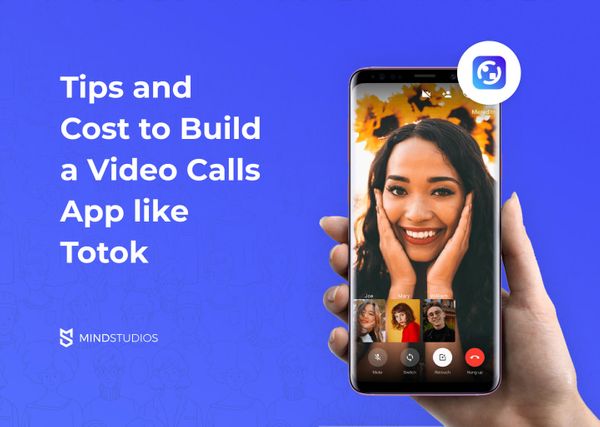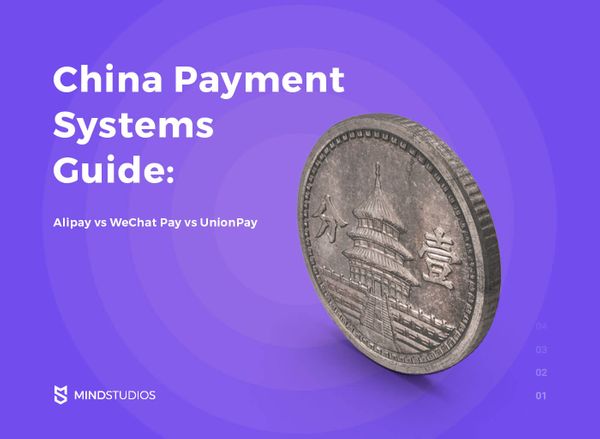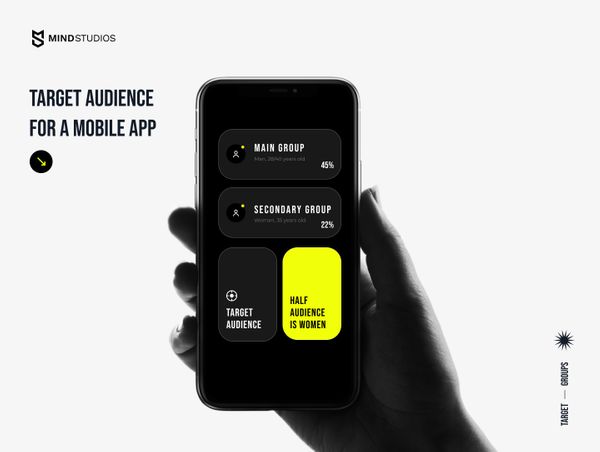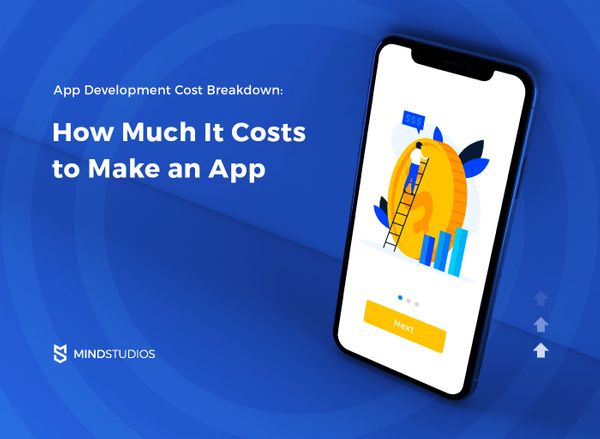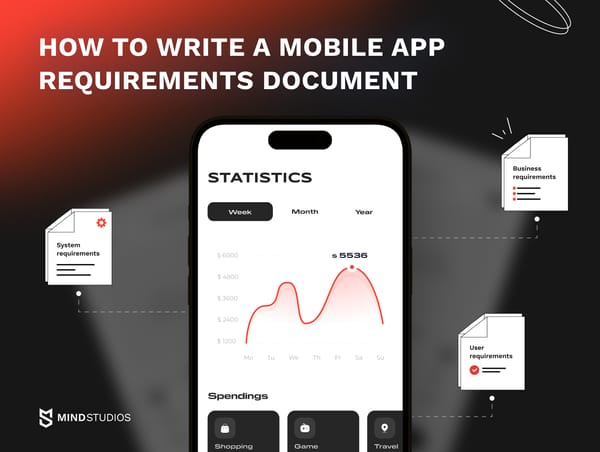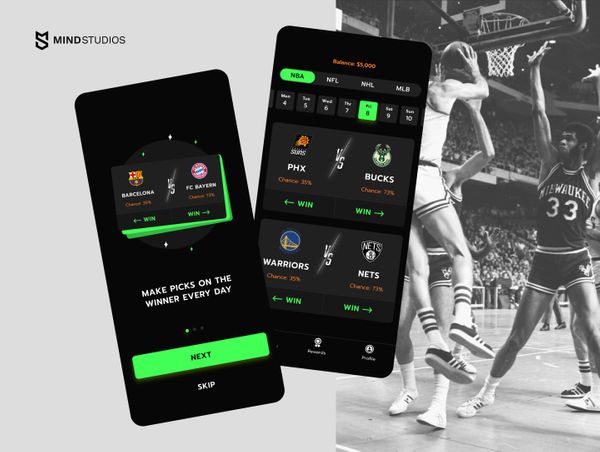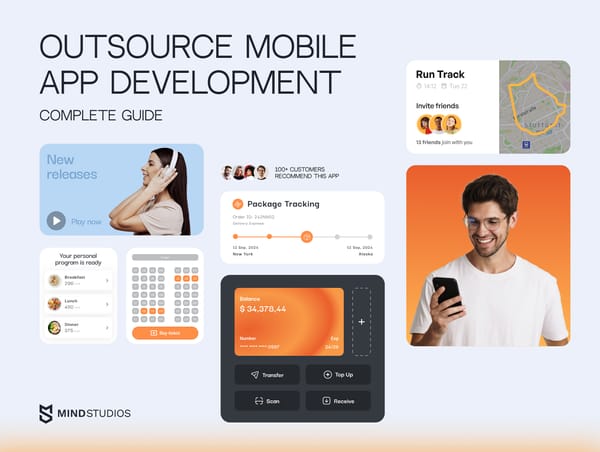Entering China’s market means, first and foremost, getting to know WeChat and figuring out how to make a WeChat Mini Program.
Launched in 2011, WeChat, an instant messaging, social media, and mobile payment app, has 1,26 billion monthly active users as of 2022. And it gets better: when WeChat’s success skyrocketed, in 2017 the creators, Tencent, introduced WeChat Mini Programs — easy-to-create tiny apps within the WeChat application, widely used by business owners in all kinds of industries. Now, there are over 3 million of Mini Programs on the market and counting.
In this article, we explain how to develop a WeChat Mini Program and share Mind Studio’s own experience of creating a digital product for the Chinese market.
What is a WeChat Mini Program and how does it work?
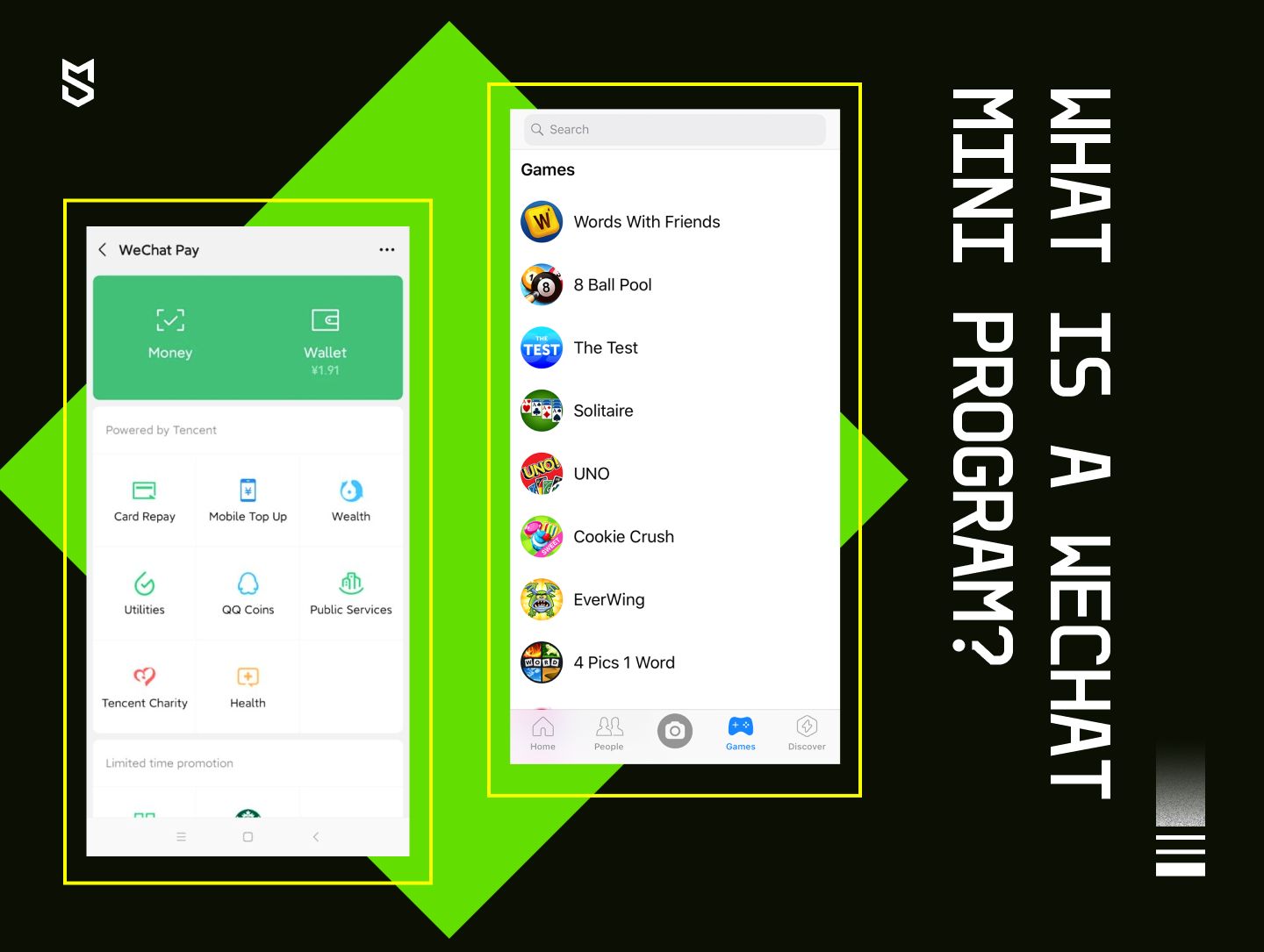
In a little over a decade, the Chinese messenger WeChat developed by Tencent has turned into an independent ecosystem. Today, it serves as a social media network, an app store with its own payment system, and a massive selection of mobile games.
WeChat Mini Programs are small apps that integrate directly into WeChat and run within the WeChat app. They’re different from traditional apps as they run faster, are easier to develop, and don’t need to be installed. They also offer companies access to WeChat’s enormous user base. But they also have their limitations.
WeChat Mini Programs are fast because they’re small — the limit for a WeChat Mini Program is 10 MB, to make sure they don’t require a lot of processing power. For the same reason, they’re not ripe with features — you can only build so many features in a mere 10 MB.
It’s possible to only have a Mini Program without developing a native mobile app. However, many companies use their Mini Programs to put the most crucial features at their customers’ fingertips, but still offer a full-sized app for those who want it. A Mini Program can also serve as an advertisement for the main native app.
The benefits of launching a WeChat Mini Program
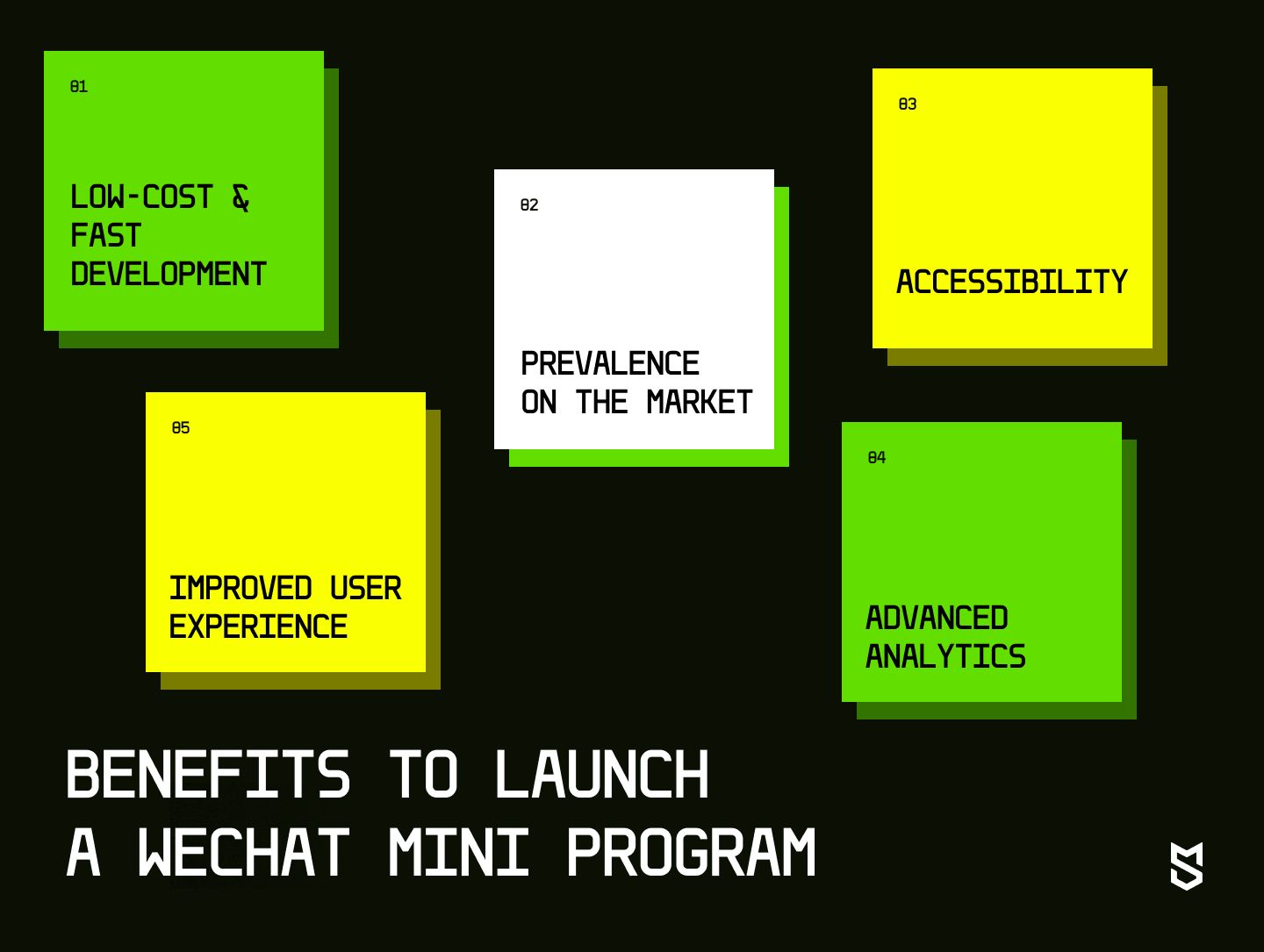
Brands all over the world primarily use native apps to conduct business, and China is no exception. So, is it still worth investing in building a WeChat Mini Program? We’ve picked the most compelling reasons that will convince you it is.
Low cost & fast development
Let’s start with the fact that building a WeChat Mini Program is not that big of an investment. One of its distinguishing features is simplicity and limited features, which means the design and development stage takes around 35% of the time required to create a unique and complex native app for multiple platforms. Moreover, when businesses use traditional e-commerce platforms, they usually have to pay a fee of up to 20% of the sale, while WeChat Mini Programs are fee-free. In addition, you can save money on notifications feature, as it is provided by WeChat.
Prevalence on the market
With 78% of the people aged 16-64 using WeChat across the country as of 2020, this platform has truly become an integral part of the Chinese lifestyle. Scanning QR codes, using Mini Programs to pay for transportation, shop while waiting in lines, read the news — these apps are deeply embedded in everyday life of the whole population.
Accessibility
As of 2022, 70% of population in China has access to the internet, and it’s getting cheaper with each year. Most public places, like coffee shops and malls, have Wi-Fi connection. However, as a rule it is pretty slow, so it makes sense to develop apps that don’t require much internet traffic. That’s one of the biggest benefits of WeChat Mini Programs: they are small and don’t need to be installed like native apps, and therefore take no time to load. This also makes Mini Programs especially popular among users with low purchasing power — in particular, those living in Tier 3 and Tier 4 cities.
Advanced analytics
WeChat Mini Programs give access to data that allows businesses to analyze their users’ customer journeys, including interactions and conversion rates. This data indicates what adjustments need to be made to the program so that it is more appealing to the consumers. Furthermore, WeChat Mini Programs offer dashboards customized according to the needs of specific businesses.
Improved user experience
Since businesses get access to insights regarding their customers’ interactions with Mini Programs, they have all the resources to make further experience with the apps as convenient and efficient as possible. Despite the fact the WeChat Mini Programs have limited features, brands still can and do use live streams, 3D models, AR filters, and other trendy features to attract potential customers. In addition, since users don’t need to download WeChat Mini Programs to their phones, they are extremely convenient and safe in terms of cybersecurity.
What kinds of Mini Programs exist on WeChat?
The short answer to this question is all kinds. If it can be coded in JavaScript, fits within the 10 MB size limit, and complies with the WeChat Terms of Service and Chinese legislation, it can be made into a WeChat Mini Program. But there are few categories that are especially common.
WeChat mini games
According to the research published on Statista in 2021, mini-games are the number one category in terms of time users spend on WeChat Mini Programs. These games can be characterized as hyper-casual, since they offer short sessions, have easy-to-grasp game mechanics, and yet are quite diverse. If you’re interested in developing your own WeChat Mini Program in the gaming field, take a look at our guide on how to create a hyper-casual game.
Examples
While WeChat Mini Games can be completely independent digital products (like Pinball King or The Strongest Bomb), they are also often used by brands as a tool to increase sales. For instance, in 2022 Coca-Cola in China launched a series of multiplayer mini-games to celebrate the Year of the Tiger. Customers could access the program through a QR code on the back of Coca-Cola cans. Throughout this dynamic experience, users collected “tiger coins” and could complete this digital journey together with their loved ones.
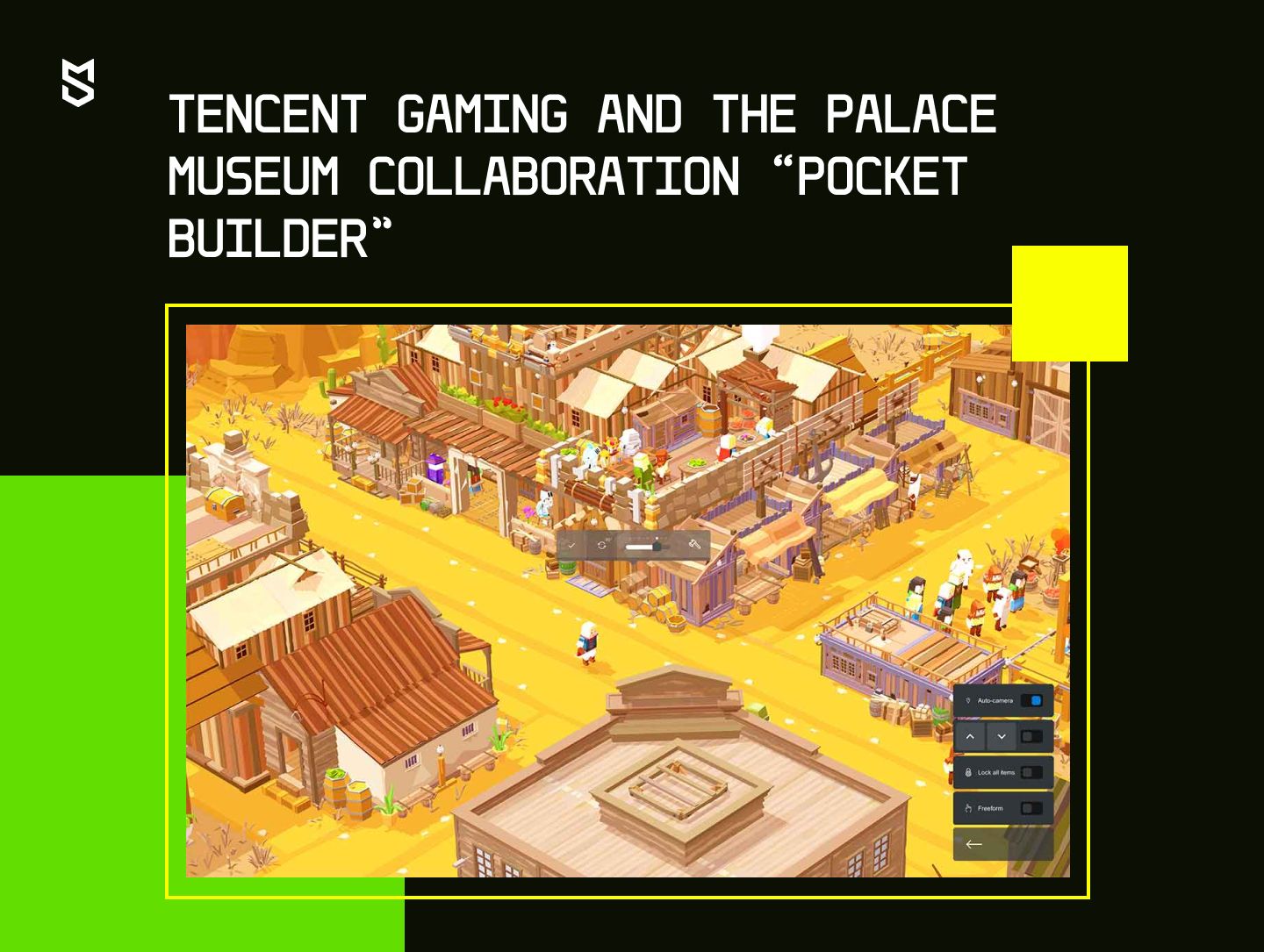
Another brilliant example of WeChat Mini Games is the collaboration of Tencent Gaming with the Palace Museum in Beijing. Together, they created a game called “Pocket Builder” that brought together those who were nostalgic for Nokia’s iconic Snake game. Here, users can explore the Ming and Qing dynasty home, look for treasures, learn about traditional Chinese architecture and art, as well as share their experience with the game on WeChat feed.
WeChat e-commerce
In 2020, transactions made through WeChat Mini Programs reached around $250 billion, and users who make transactions through these programs increased by 80% in 2021. Naturally, the number of Mini Programs spiked 41% in the last year.
Among the biggest incentives that the platform offers to e-commerce businesses are:
- WeChat's user base, which is one of the biggest in China
- Opportunity to enhance users’ interaction with the brand’s products and/or services
- High speed at which Mini Programs load triggers impulsive buying decisions
It’s easy to rethink the decision to purchase while you wait for a page to load. Since Mini Programs are small, they load fast, and their seamless integration with WeChat Pay (WeChat’s own payment system) allows for fast buying. When seeing a product, especially one on sale, users buy it in the blink of an eye. That is why most e-commerce giants in China, like Taobao and JD, have their own Mini Programs and continue creating new ones in collaboration with global brands.
Example
One of the trends among e-commerce platforms in China is using Mini Programs specifically for live-streaming. How does it work? For example, fashion e-commerce platform Mogujie allows sellers to make live streams to show the products they are selling. The users who are willing to buy these items can immediately make an order through a “See now, buy now” feature. After the launch, customer retention rose by 236% in just 30 days. It took Mogujie only three weekends to develop and launch this Mini Program.
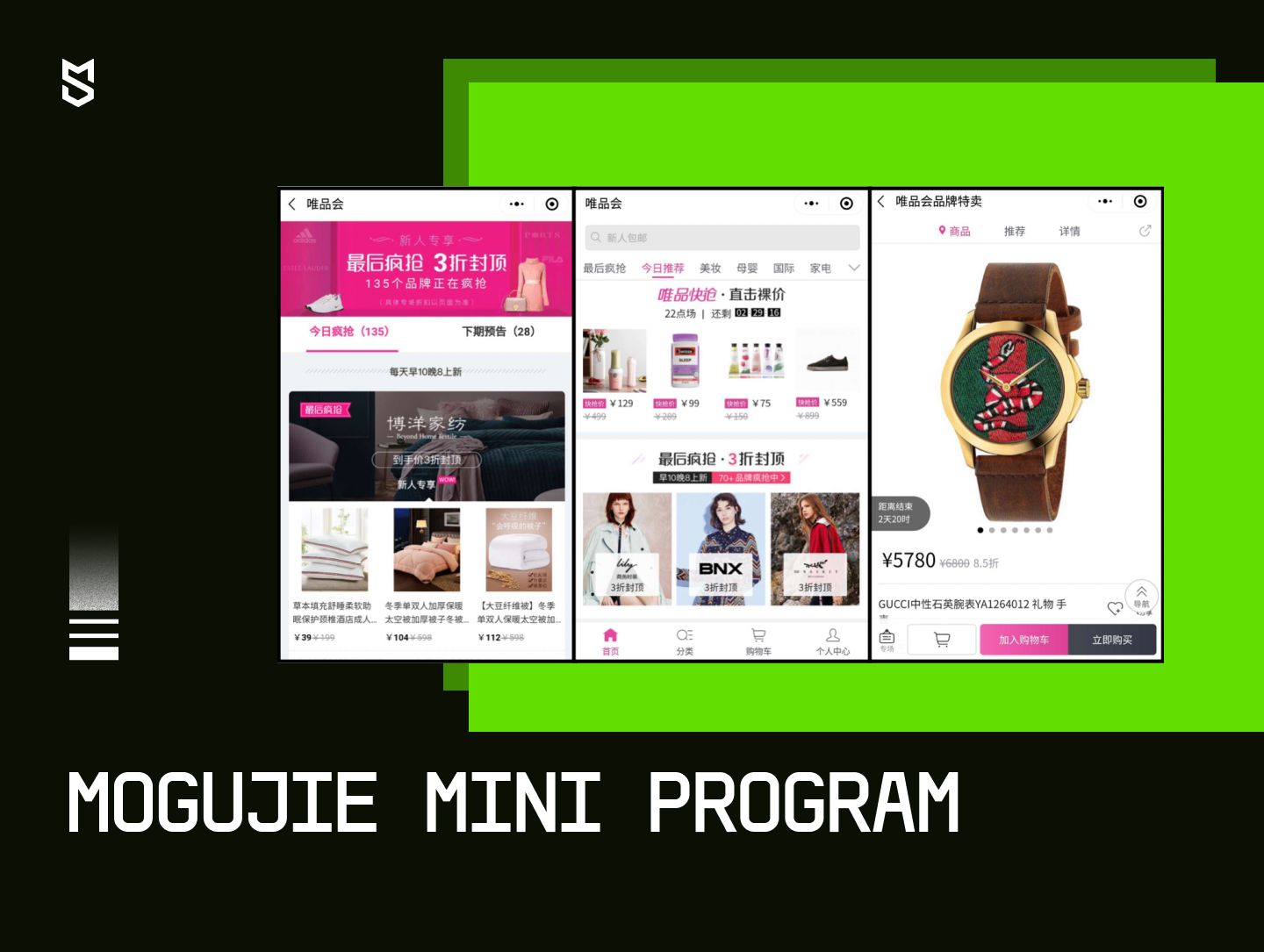
WeChat news
Since the majority of Internet users in China — 1 billion — are using WeChat, it’s no surprise that it has become a major player in the news industry. A Mini Program has become a communication channel for users to interact with news outlets and a quick link to official WeChat accounts, where updates can be added instantly and effortlessly. Whether you’re an official news outlet or a YouTube influencer, a Mini Program can be a convenient way to acquire new followers. The biggest informational sources in China quickly adapted to the new trend and created their own mini apps.
Examples
The biggest news sources in China, including radio and TV stations, and newspapers, have official WeChat accounts and publish their content through their Mini Programs. At the end of 2021, China Central Television's business channel (CCTV-2) even had the most influential official account on WeChat. Other examples of popular media on the platform are Sixth Tone and China Daily, both publishing information in English language.
WeChat transportation and travel
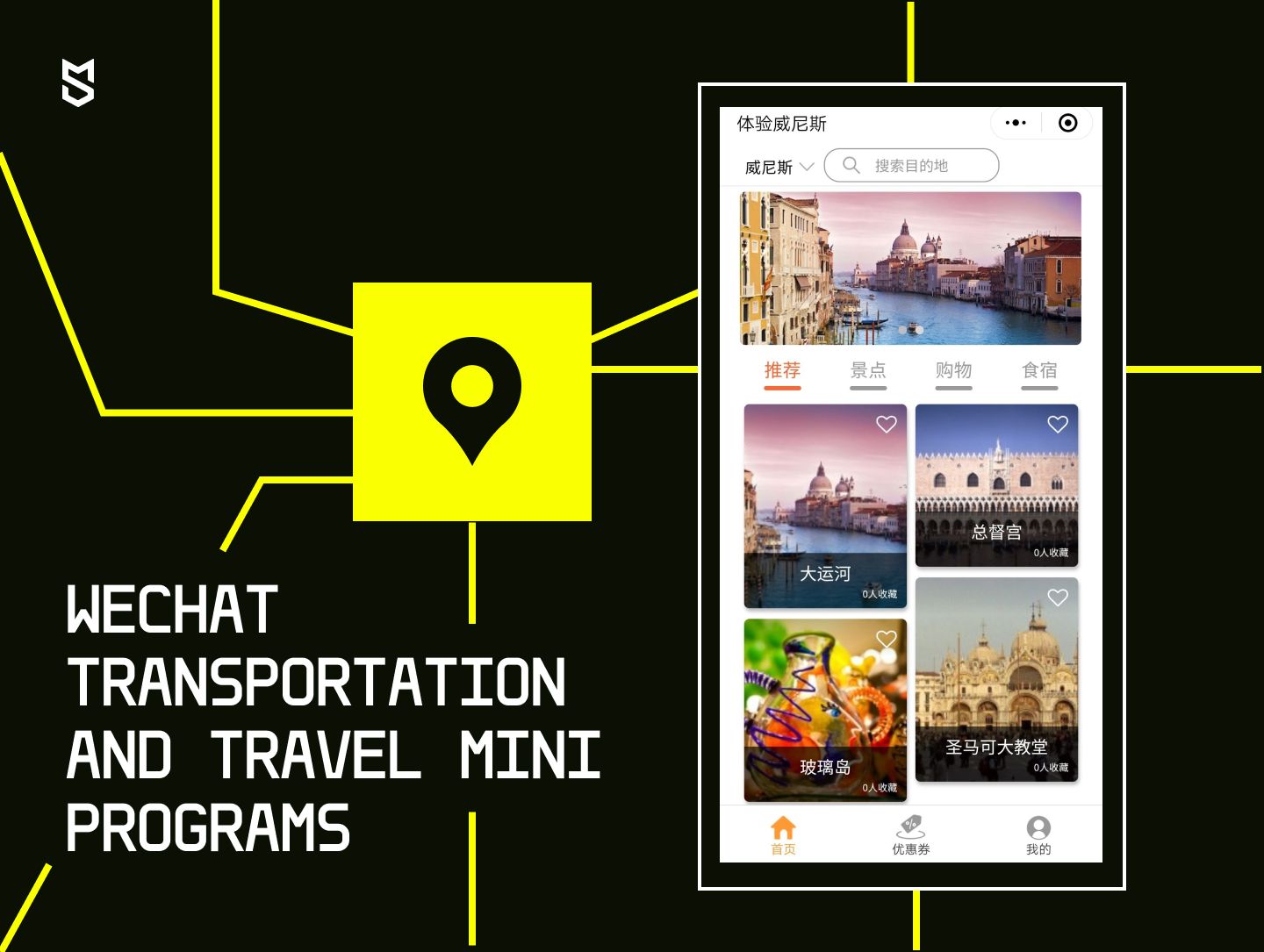
Since WeChat has become an integral part of Chinese lifestyle, it’s no wonder there are numerous Mini Programs that help locals navigate around their cities. Subway, buses, taxis — you name the type of transportation, and WeChat will offer a Mini Program that will help you find the right way to reach your destination and pay for the ride online.
Moreover, when it comes to travel to other cities, WeChat has got you covered with its mini programs for booking plane and train tickets, and even finding a place to stay.
Example
Travel agency Qunar, for instance, uses live-streaming while showing the users various destinations and offering special deals.
OMO (online merged with offline)
During the first few years after WeChat introduced its Mini Programs, businesses used it as a tool for O2O (online to offline) approach. Stores, restaurants, and other service providers encouraged customers to use their Mini Programs in exchange for some kind of bonus points. For instance, McDonald’s China offered discounts to their guests if they showed a cashier a Mini Program on their smartphone. However, now this model is being replaced by a new approach.
According to Think with Google, over 60% of shopping journeys start online. However, around 46% of consumers still prefer shopping offline. That is why now, businesses are moving from O2O model to OMO — online merged with offline approach to satisfy every customer’s needs. This means that shopping online and offline are no longer viewed as unconnected encounters, but as one full experience.
In practice, this means that customers have the opportunity to interact with the product offline and then purchase it online. This way they can, for instance, check the fabric quality of the blouse they are about to buy; taste different varieties of apples and choose the ones they want to purchase; flip through a couple of smartphones to see which one fits their hand — and then get it all delivered to their homes. Instead of waiting in lines at the counter and then carrying all the purchases, customers can now even buy the items they want online while still being in the physical store.
Such approach also helps businesses to make their customers’ experience highly personalized by enhancing users’ profiles and enriching offline experience by multiple virtual features via Mini Programs.
Example
Mini Program by L’Oréal concept store in Shanghai allows customers to receive product recommendations based on their skin analysis and provides personalized content based on their interactions in the store. One more cool feature of the app is a virtual bike tour around Paris, during which users can collect discount points.
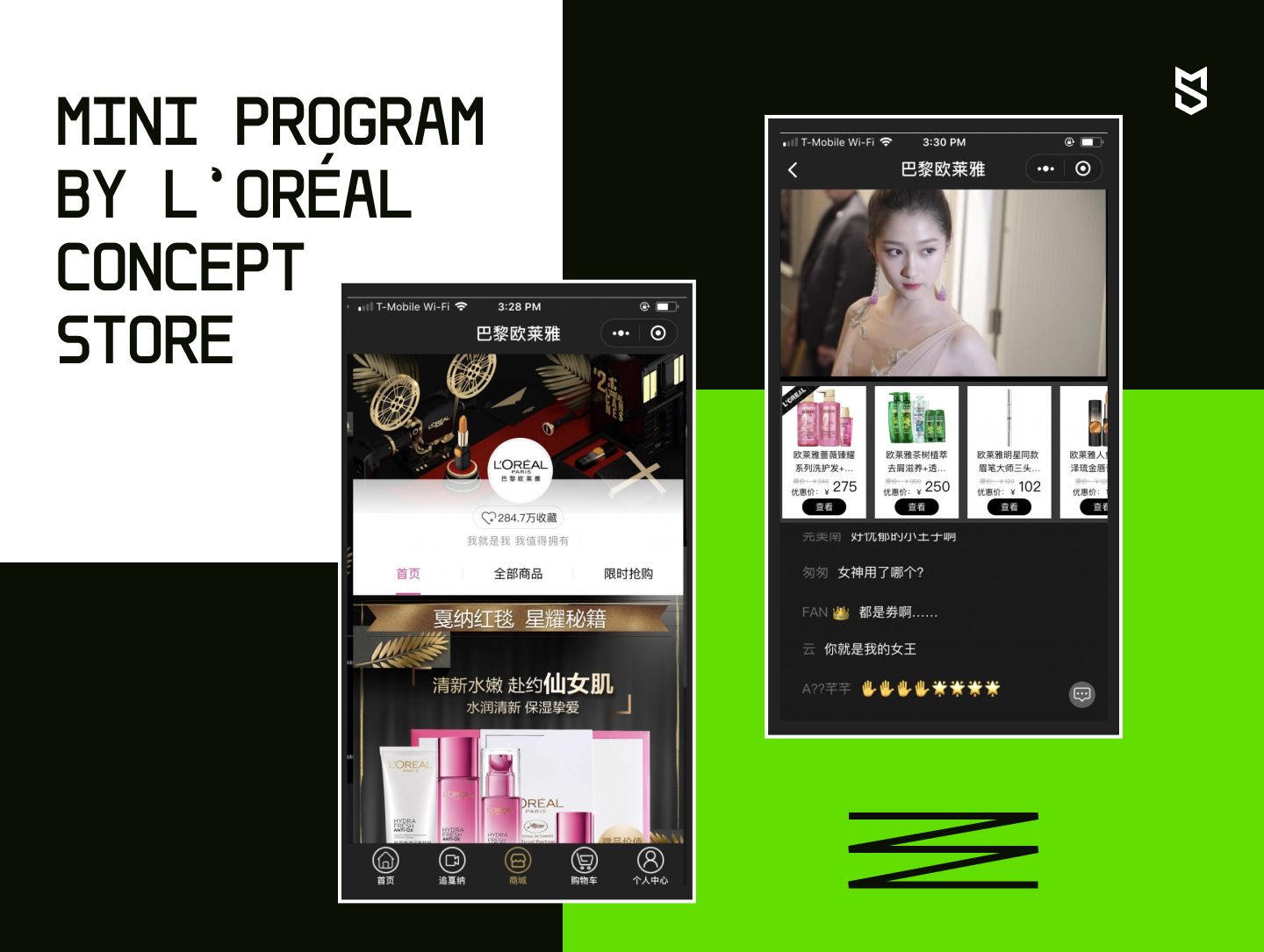
How to make your own WeChat Mini Program
We’ve singled out five fundamental steps that will get you from raw idea stage to the ready and functioning WeChat Mini Program. Let’s take a look at them.
Step 1. Define your idea
What is the purpose of your WeChat Mini Program? How will it serve your business, and why will it be appealing to your customers? The answers to these questions are vital before you move on to the next stages.
Remember that a Mini Program should not be a replica of your native app if you have one. To decide on the program’s functionality, we recommend conducting research on what features in your native app or website are used the most by the customers. You can do this on your own or delegate this task to your development team. Focus on a single feature (or maximum two) for your project. If there are more, consider building several WeChat Mini Programs for different features.
Step 2. Create an official WeChat account
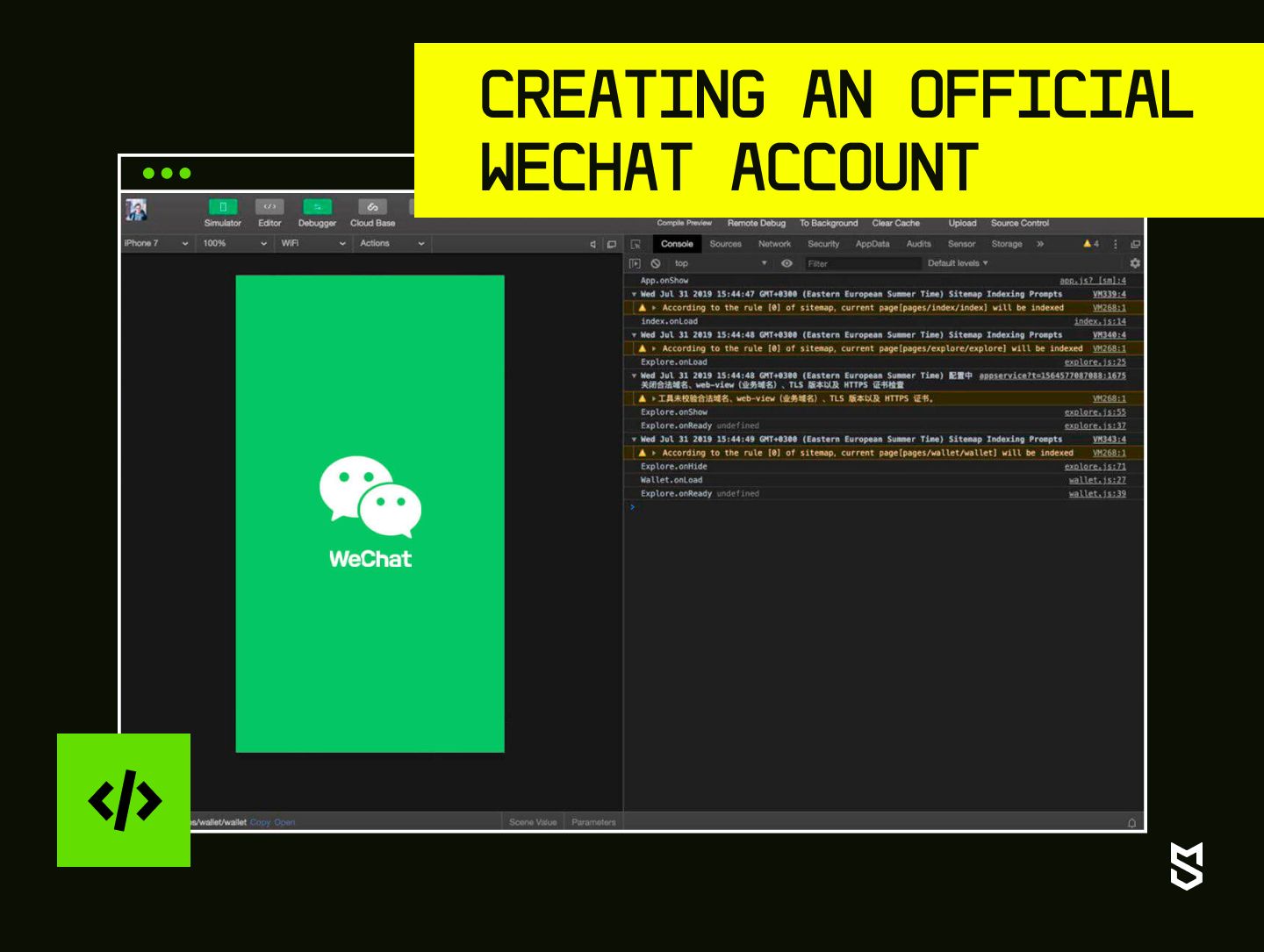
WeChat Mini Programs can be operated by businesses, not individual users, and the code is written directly within WeChat. Therefore, you need to register an official WeChat developer account. This can be done only if you are either a Chinese company or a WFOE — wholly foreign-owned enterprise with a permit to conduct business in mainland China.
To register an official WeChat developer account, you need to:
- Go to WeChat registration page, indicate that you want to create a Mini Program and fill in the form with your personal information
- Choose the application type you wish to create
- Fill in the information about your business, provide official documentation and bank details
- Link your bank account to Tencent and pay the necessary fee to verify your application
- Wait for the further instructions. This usually takes up to 3 days, after which you might need to provide additional information for your account to be approved.
Step 3. Find the development team
Developing your own WeChat Mini Program isn’t that difficult compared to creating native apps. However, you still need a team that can conduct an all-encompassing research, knows the specifics of this particular market, and has skilled JavaScript developers.
When choosing the development team, there are two main factors to take into account:
- Team’s hourly rate
This directly depends on the specialists’ experience and geographical location. For instance, the average rate of US-based Mini Program developers on WeChat is $72/hour for a middle-skilled JavaScript developer (NY). In the meantime, Eastern European teams like Mind Studios charge around $45/hour while delivering results of the same quality. Therefore, before making a short list of companies you might outsource the development process to, decide on your budget limits and choose accordingly. - Relevant experience
While it should be easy enough to find the developers with JavaScript knowledge, it’s also advisable to cooperate with a team who has at least basic understanding of the Chinese market and WeChat specifics.
Apart from the fact that Mind Studios’ front-end developers are well acquainted with WXML and WXSS, we also have experience in building an app for the Chinese market and working with WeChat in particular. Keep reading, and you’ll find out more about our expertise in this area.
Step 4. Delegate design and development to the chosen team
Ultimately, building a WeChat Mini Program consists of 3 main stages: the discovery, the UI/UX design, and the development itself. The latter one is fairly easy, as most features in Mini Programs are default. It’s possible to customize the look of your WeChat Mini Program, but this customization is limited. The API integration is also restricted — an HTTP query is allowed only for WeChat-approved sites. The reason for all these limitations is to achieve perfect integration and speedy functionality within the WeChat ecosystem.
Tencent offers software for WeChat Mini Program developers where they can write their code (or paste it if they write it elsewhere), make sure the app looks the way it should, and submit it for review. Once your Mini Program is approved — it’s online, and users can search for it on WeChat.
Step 5. Submit the Mini Program for review
After your Mini Program is ready, submit it to WeChat for review and approval. This usually takes 1-3 days, if your Mini Program doesn’t violate any laws and content restrictions in China, and has adequate functionality and design.
How to advertise your WeChat Mini Program
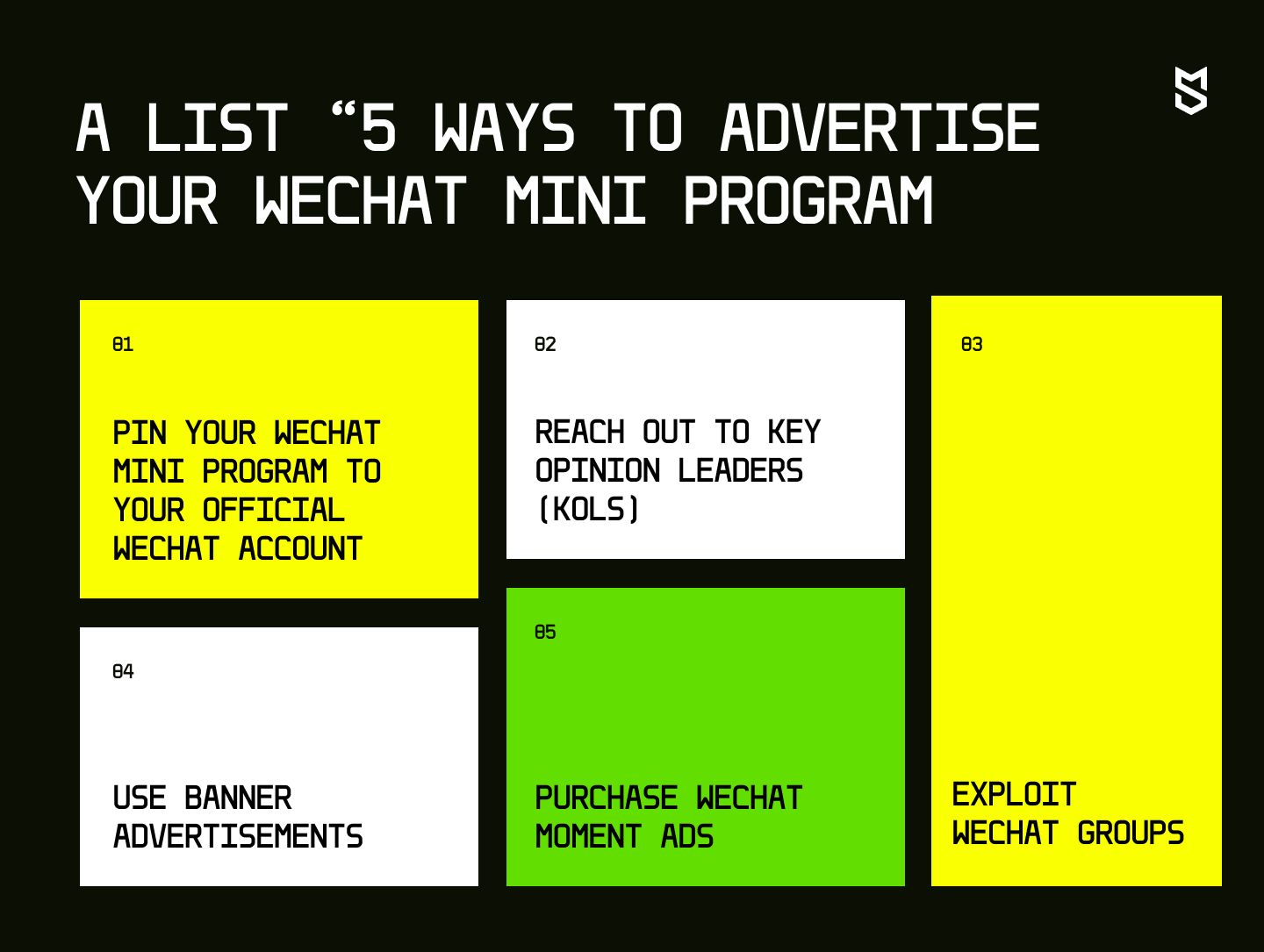
Since Mini Programs are apps within the WeChat app, the latter one provides all the necessary instruments to successfully advertise your product to the target audience based on their age, gender, interests, and other data. Here, we’ve listed five steps that will help you promote your Mini Program.
- Pin your WeChat Mini Program to your official WeChat account
This will make it easy for your community to access the Mini Program and allow you to interact with your subscribers, for instance, send notifications and messages to them, etc. - Reach out to Key Opinion Leaders (KOLs)
Collaborations with local influencers is probably one of the most effective ways to promote your brand or service. Make a list of KOLs whose content is relevant to your particular industry, like beauty products, technology, etc., and agree upon the terms of them advertising your product. For instance, they can share a QR code for your Mini Program on their Moments for everyone to see and follow. The power of such advertising is remarkable: for instance, over 30 percent of WeChat users buy beauty products and clothes after they’ve been recommended by KOLs. - Exploit WeChat groups
Whether you decide to enter already popular WeChat groups or create one of your own, this will help you track your target audience’s interests, pain points, and viral trends. Simply put, it helps to keep the finger on the pulse of what’s going on in the community. This is also the perfect place to announce sales, reward the most active users with discounts or prizes, or even allure customers by making the option of joining your WeChat groups exclusive. - Use banner advertisements
Such ads can be featured on WeChat articles in the form of an image or a video with a link to the store, an official account or an HTML5 page. These ads are shown to your target audience defined by WeChat algorithm. - Purchase WeChat Moment Ads
Moments on WeChat is the analogue of the newsfeed on other social media platforms. Typically, the Moment ad is blended with the other posts and includes the brand’s name and profile image, pictures or videos, a link to the HTML5 page, and a short text (up to 40 characters). If a WeChat user shares your Moment ad with another user, the platform will feature this ad on the feed of users with the same interests. Moment ads are more expensive than the banner kind, but they are also more engaging.
One more important point to keep in mind. Since Google, Facebook, Instagram, and other platforms popular in other countries are banned in China, locals use alternative services. So, make sure they can find your brand on Baidu search engine or Weibo, which is the analogue of Twitter in China. These are platforms where users can check whether your brand is legitimate and trustworthy.
Examples of the best WeChat Mini Programs
With over 3 million WeChat Mini Programs on the market, the biggest world-famous brands also don’t want to miss out on the opportunity to conquer China’s market. Here, we’ve collected the most successful cases of globally known companies entering the market of WeChat Mini Programs.
Interactive Maps by Legoland
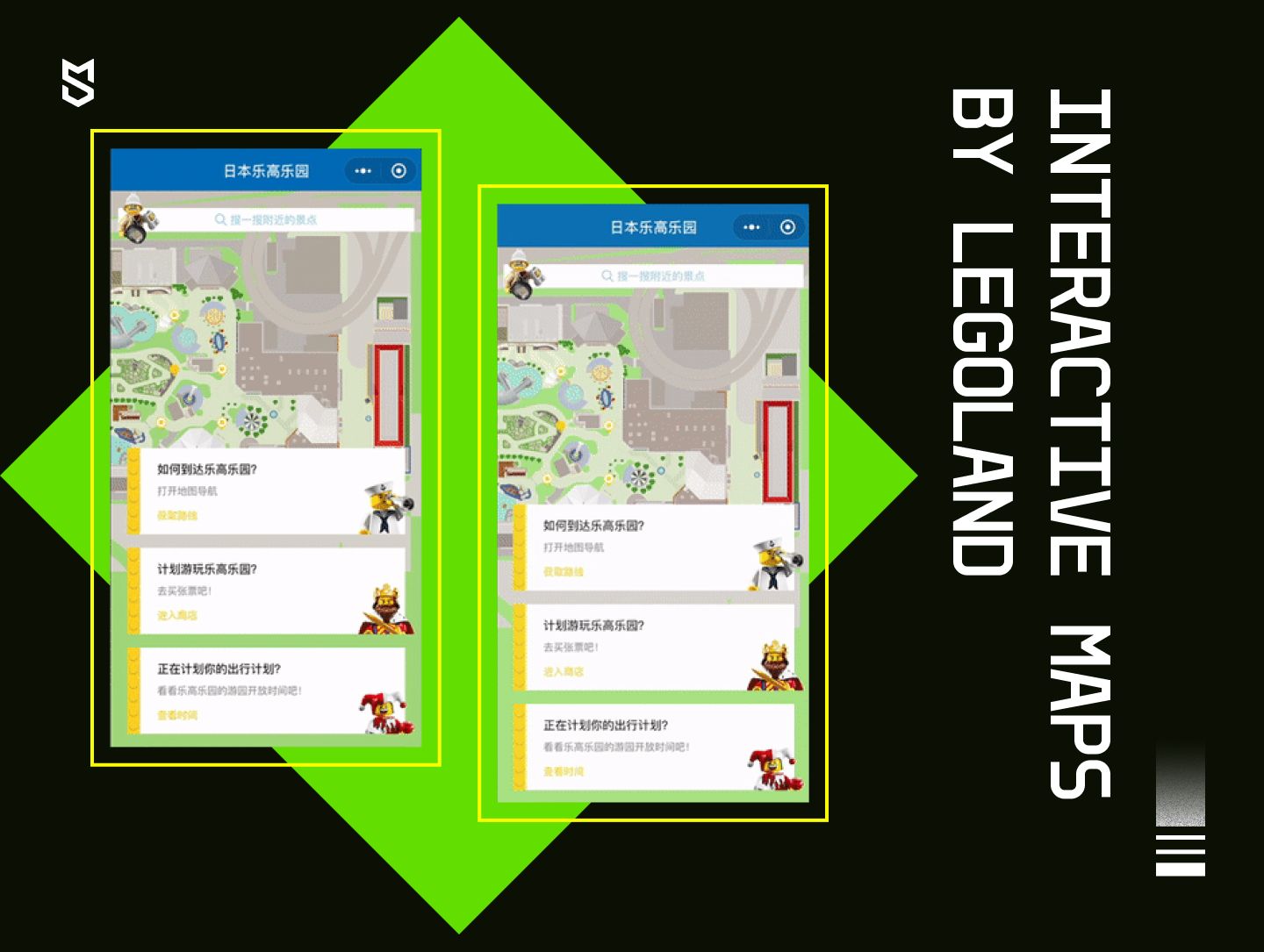
This app by Merlin Entertainments (Legoland’s parent company) is a classic example of online merged with offline marketing. Basically, this Mini Program is an interactive map that helps visitors navigate through the park. The map has three main destination categories which are attractions, dining, shopping, and customer service. One more feature are ‘geolocated’ photos the visitors can take through the app.
Say it with Starbucks
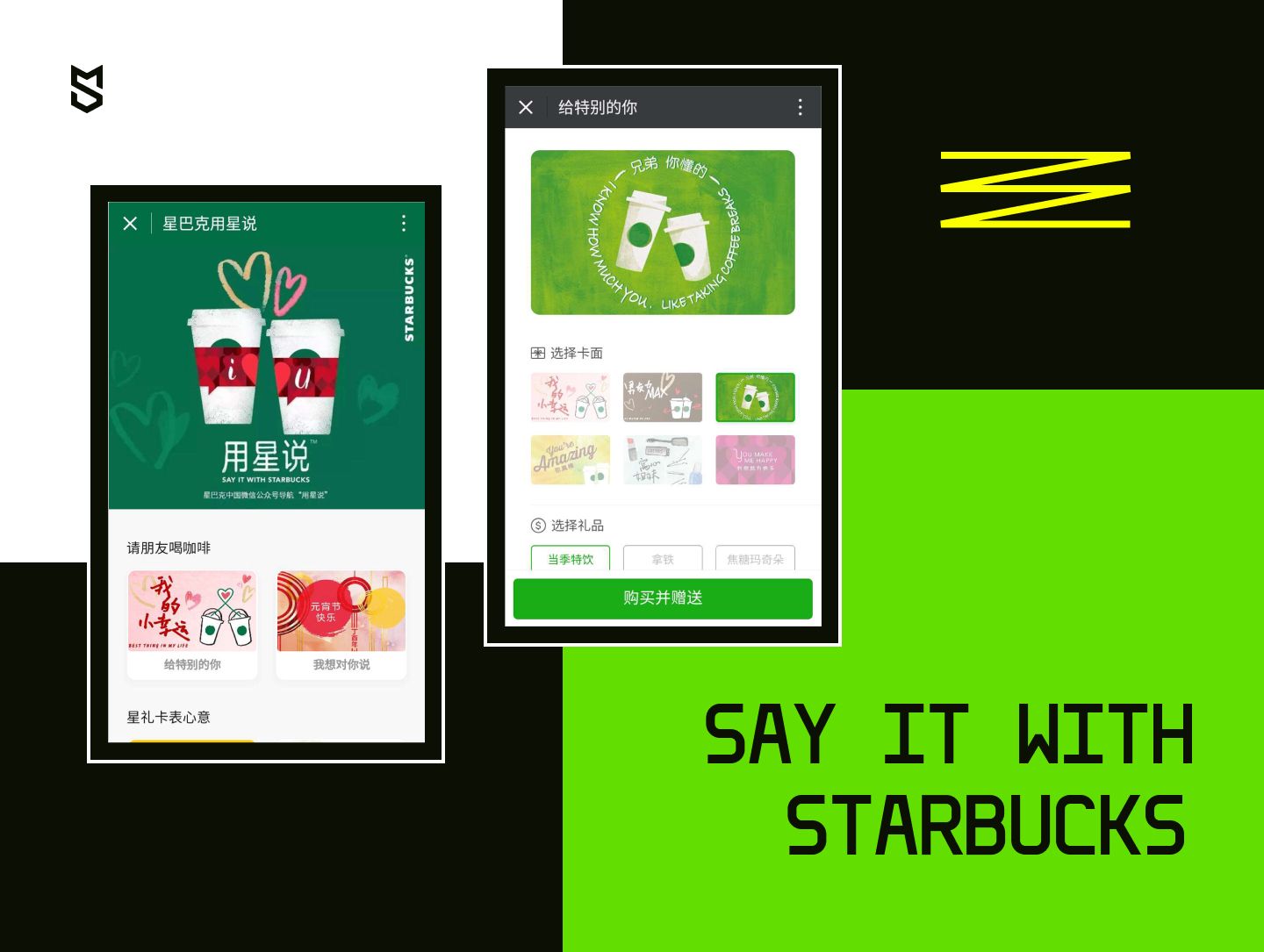
Like many other companies who want to increase sales in China, Starbucks launched a Mini Program that allows customers to make direct pick-up or delivery orders. Seems simple, but there is a twist. The key feature here is the social gifting option, which became viral thanks to “Say it with Starbucks” marketing campaign. Users could now send gift cards with customized messages to their loved ones directly through this app.
And it worked because let’s face it, it’s the little gestures that sometimes make a difference. Wouldn’t it be nice to cheer up your friend before an important job interview with a cup of their favorite coconut latte? Or to finally ask that acquaintance of yours on a date by buying them a blueberry muffin and sending a cute note?
Tesla’s Mini Program for drivers

Tesla promotes its electric vehicles everywhere, and China is no exception. To conquer this market, they have launched a Mini Program that allows users to book a test drive, and find the nearest charging station. Moreover, they developed a QR code feature through which their customers can schedule appointments at Tesla service centers, and therefore, quickly have maintenance checks or resolve any issues with their vehicles.
Magical animals by Burberry
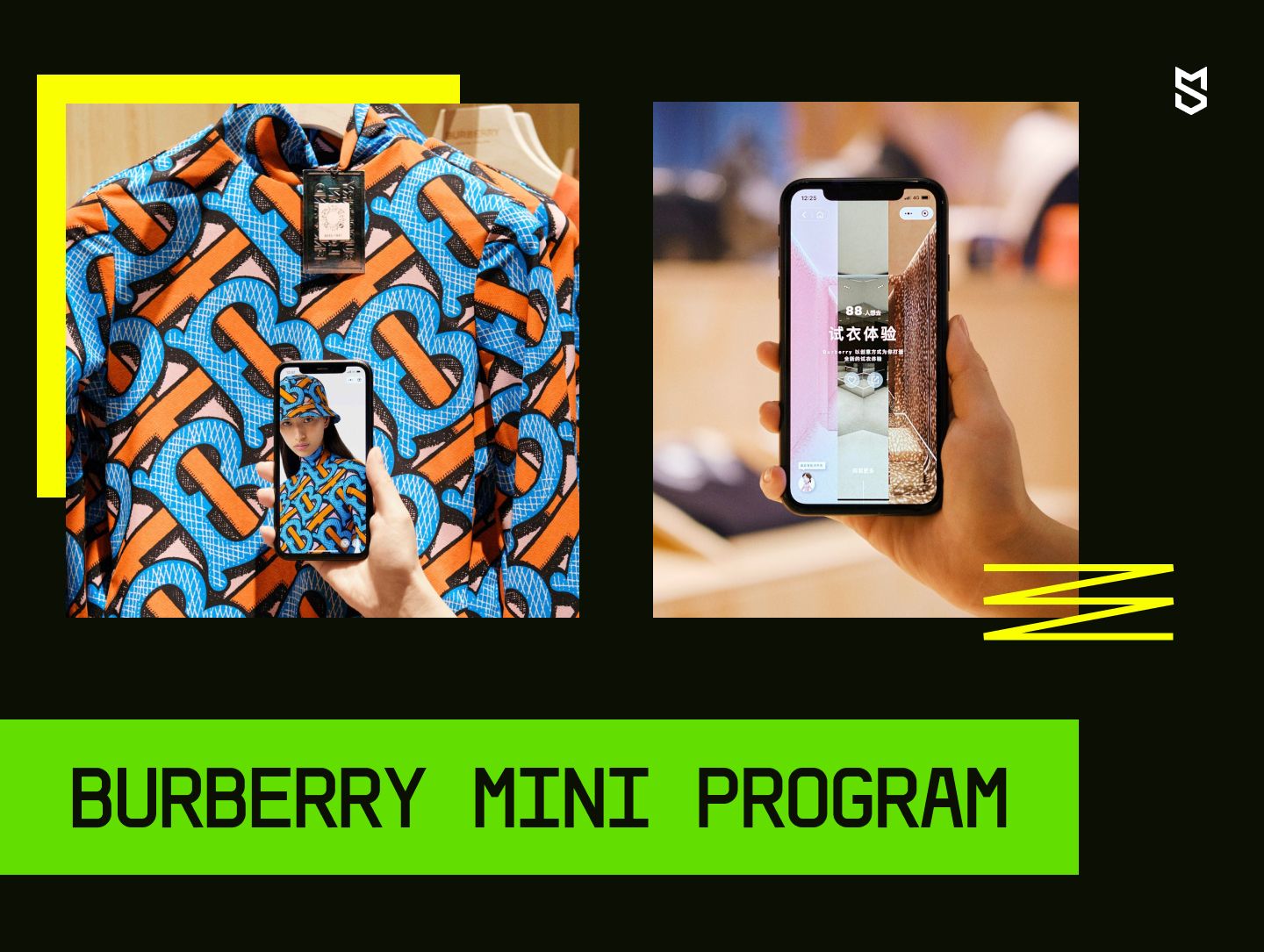
On the eve of Chinese New Year in 2021, Burberry fashion house launched an outstanding campaign featuring their animated character Bobo the Deer. Through both offline activities and using this avatar Mini Program, users could earn points to dress their characters up and even upgrade them to other animals, like a sheep or an ox. Each of such transformations gave customers a chance to win digital and physical gifts from Burberry.
The offline interactions included scanning QR codes at the brand’s stores and talking to sales people there. Meanwhile, earning points on the app involved commenting, uploading pictures, sharing personalized cards with friends, and so on.
Creating WeChat Mini Program design: Best practices
WeChat has become somewhat of a trendsetter for other platforms. After starting off as a social platform, it now provides a full-circle e-commerce experience, allowing users to order take out for dinner, find a cab, and conduct banking operations. This is precisely what we see other social media like Facebook and Instagram doing now: integrating e-commerce into their platforms. However, unlike apps that have an abundance of features, WeChat splits them into numerous small single apps with one or a couple of features each.
Sure, it might seem there isn’t much to WeChat Mini Programs design since they are so limited in size and features. But in reality, there are several UI/UX design practices you need to consider if you want to make sure your app is successful.
As simple as it gets
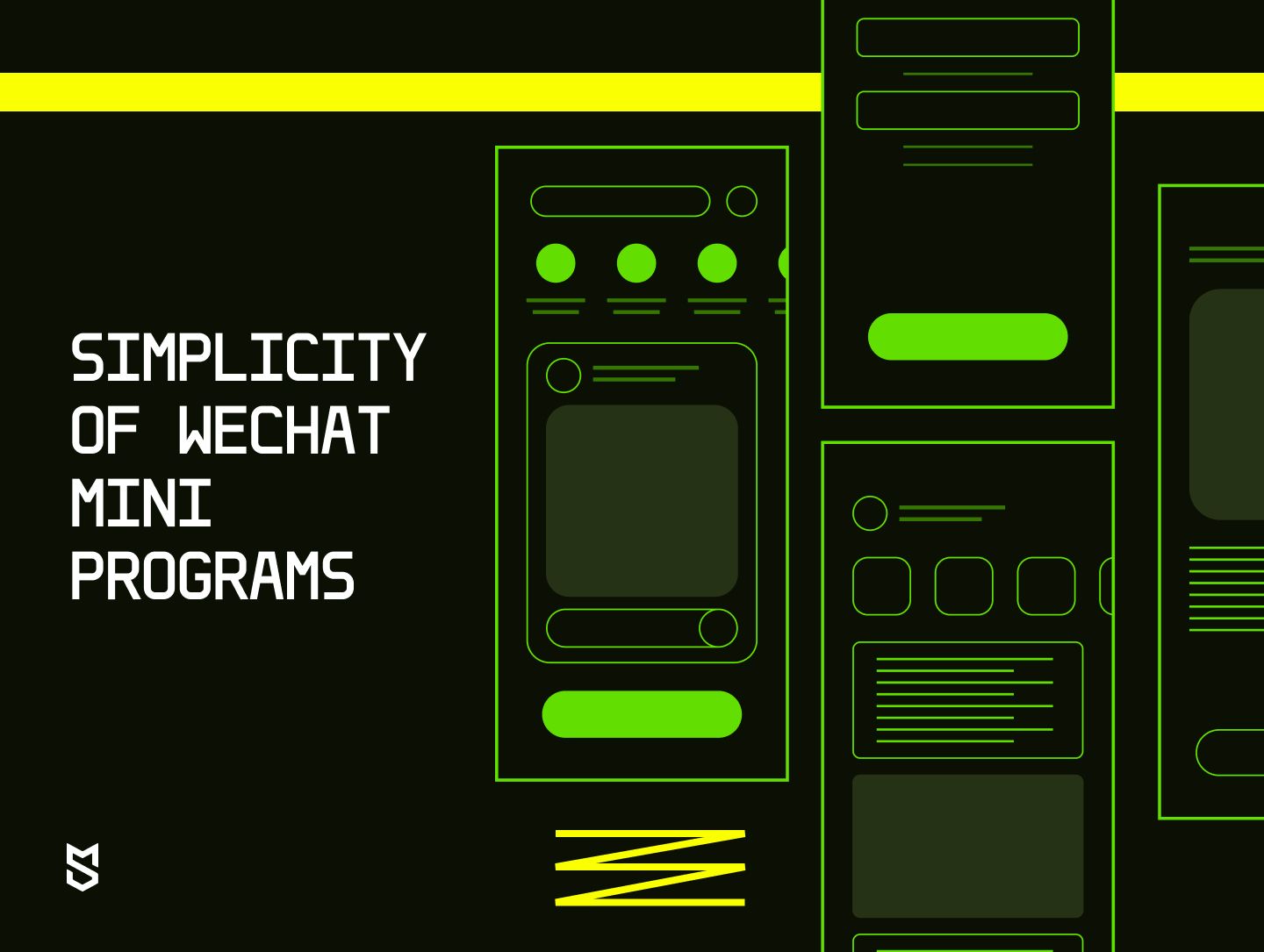
The thing with Mini Programs is that the customer’s journey should be quick enough for the user to complete it throughout just one session. Therefore, the user interface should be simple, clean, with a single-level horizontal navigation and no unnecessary distractions. For the same reason, we wouldn’t recommend adding a log-in feature unless you absolutely need the users’ information.
Offline access
The main elements of your Mini Program, such as menu, key text, and visual content, shouldn’t depend on internet connection. It’s best if your app can be cached on your customer’s phone — this will lower the bounce rates.
Key features only
Often, WeChat mini-programs have a matching native app. The common mistake here is trying to make a simpler 10 MB copy of the full version. We don’t recommend doing that, and instead suggest picking one or two most important features of your app as a base for the Mini Program. For instance, if you run an online clothing store, you can make a Mini Program for a delivery option only or for a fashion blog to promote your store.
Responsive design
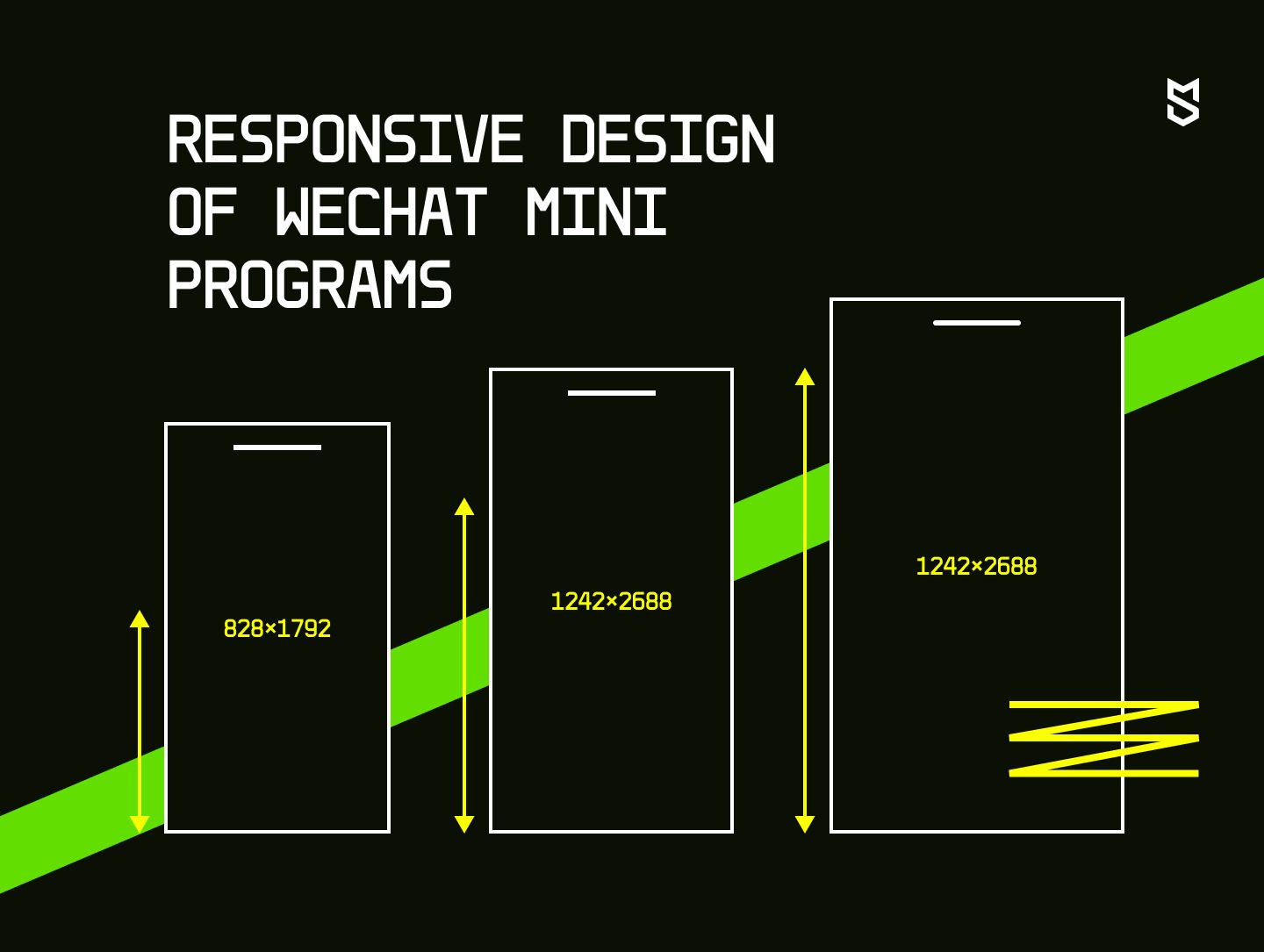
While designing a Mini Program, make sure you take into account all devices your target audience might be using. Also, keep in mind that most of your users from China are using Android-based smartphones, so your Mini Program will need to have a back button on the top bar. Otherwise, there is a risk of users accidentally closing the Mini Program with the standard Android back button.
Preloaders and skeleton screens
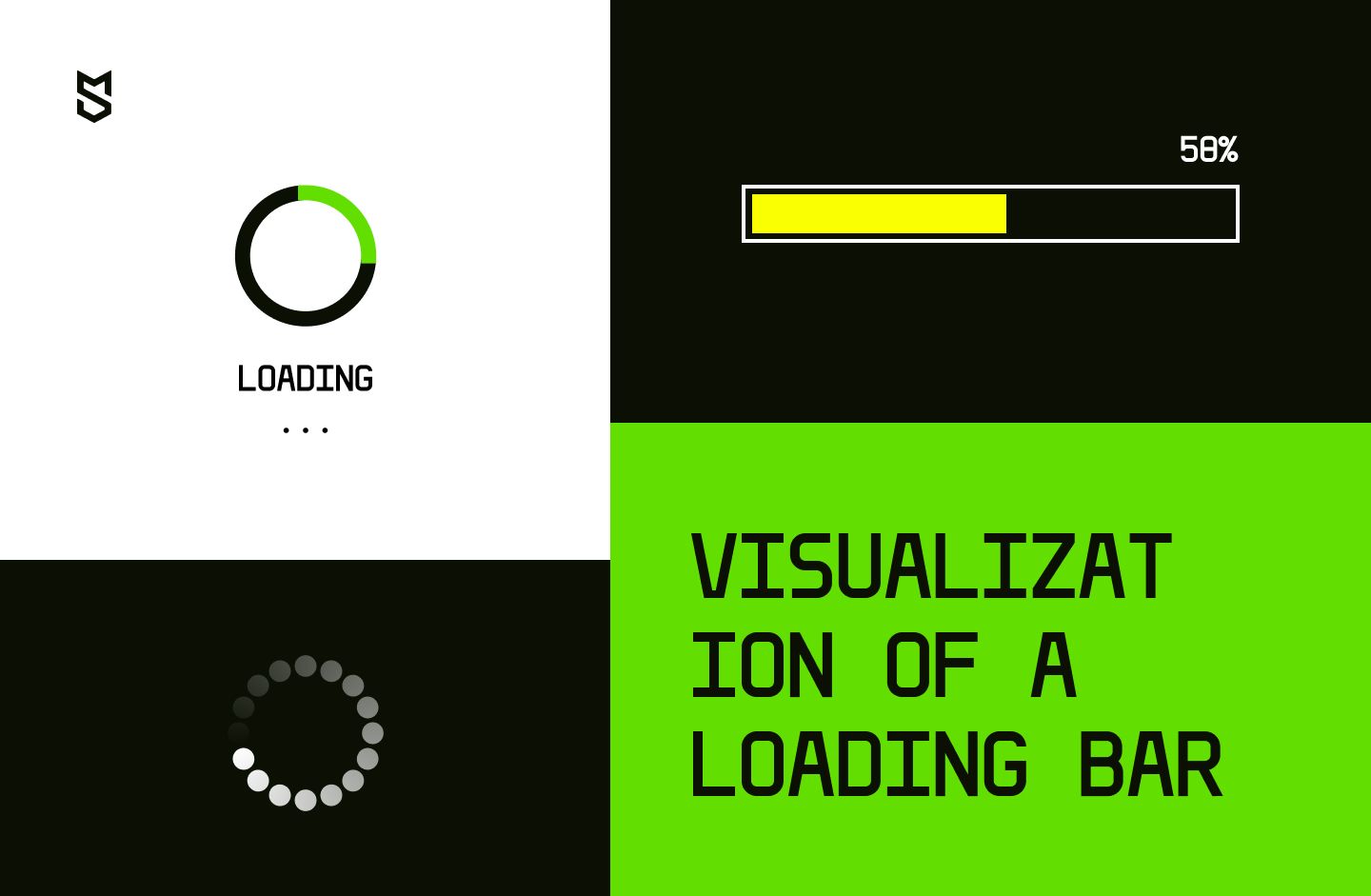
Slow internet connection can result in slow loading of the content on your Mini Program, and if the screen is completely empty even for a few seconds, it might increase the bounce rates. To minimize this risk, it’s advisable to use loading bars, especially with encouraging CTAs, or a skeleton screen that will make the user think the loading is complete.
What is the cost to make a WeChat Mini Program?
Low development costs are one of the biggest benefits of Mini Programs, alongside development speed. As a rule, WeChat Mini Program development requires a team of the following specialists:
- 1 project manager
- 1 UI/UX designer
- 1 front-end developer
- 1 backend developer
Now, let’s take a look at the main stages of WeChat app development and the cost for each of them. All the cost estimates are based on Mind Studios’ rate, which is $45/hour.
Discovery stage
If you’ve decided to enter China’s market, chances are you already have a functioning business and maybe even a website or an app. Therefore, the discovery stage for WeChat Mini Programs will probably be much quicker than in cases with native apps. During this stage, we will evaluate your idea, conduct research on WeChat market within your business niche, and together with you decide on the final concept of the mini app we are going to create.
Time estimate: 40 hours
Cost: $1800
UI/UX design stage
Though WeChat Mini Programs have just one or a couple of features, there are still a bunch of rules to follow, as we’ve mentioned in the section above. During this stage, the team creates a concept for the app’s visual and functional features based on WeChat users’ need, and after finalizing it with the client, builds prototypes — mockups of the app screens.
Time estimate: 80 hours
Cost: $3600
Development stage
Unlike creating native apps, WeChat application development is relatively simple and speedy. The team writes code directly in WeChat developer account, and after the app is ready and approved by the client, we submit it for WeChat validation, which usually takes up to 3 days.
Time estimate: 152 hours
Cost: $6840
You may have noticed that we’ve skipped the testing stage. The thing is, WeChat Mini Program testing can be done right within the software provided by Tencent, so there’s no need for a traditional QA specialist. Moreover, in some cases you can even skip on the backend as well:
- if your Mini Program is only an addition to your native app, in which case they’ll have the same server
- if there’s no need for data storage, in which case your Mini Program doesn’t require a server at all
To sum up, we’ve highlighted the approximate cost to build a WeChat Mini Program:
| WeChat Mini Program development process | Hours | Cost, USD |
|---|---|---|
| Project management | 40 | 1800 |
| Discovery stage | 40 | 1800 |
| UI/UX design stage | 80 | 3600 |
| Development stage | 152 | 6840 |
| Total | 312 | 14,040 |
Naturally, these are just rough estimates we’ve made based on our experience. However, the cost of a WeChat Mini Program will very much depend on your business and the specific features you need to implement.
To get the approximate cost for WeChat Mini Program you want to develop, get in touch with us.
Mind Studios’ Experience
One of the biggest projects we’ve implemented for the Chinese market happened when WeChat had just launched its Mini Programs, back in 2017. This is when the Mind Studios team truly immersed themselves into the Chinese digital world.
The task was to create Android and iOS native apps, and a WeChat Mini Program that would help users experience nightlife in Chinese cities. It was also aimed at providing the owners of entertainment establishments with the opportunity to personalize their customers’ experience. As a result, in collaboration with our client Artur Engalychev and designers from HeartBeat.ua, we created Unight — a platform that provides users with direct access to dining and clubbing venues in their city.
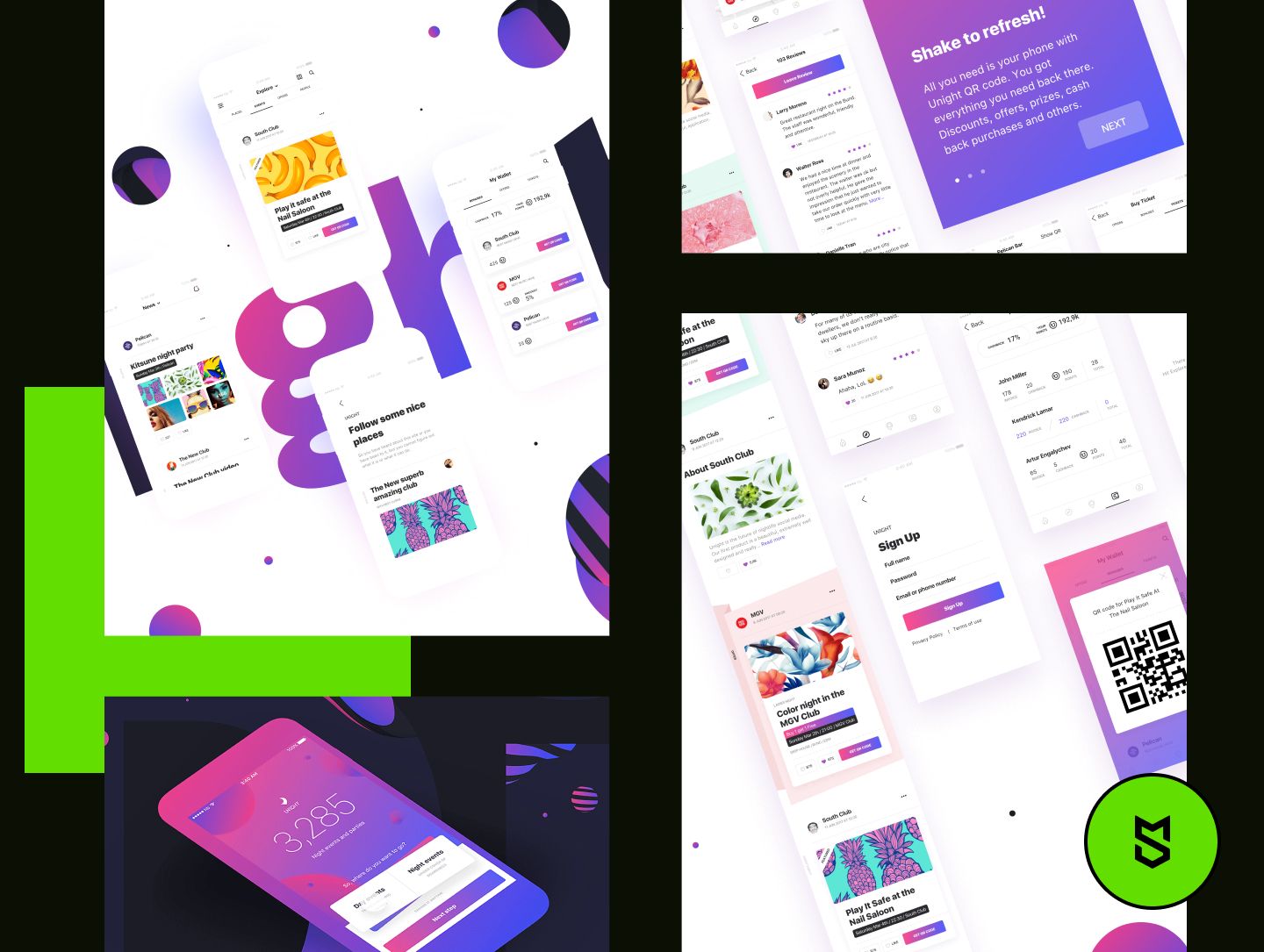
As always, we started our work on the project with a comprehensive research of the Chinese market. During the business analysis stage, our team explored the specifics of local nightlife, as well as digital trends like QR-code scanning practice and the main social media channels. We also communicated with the owners of clubs, restaurants, and other establishments to get a more profound understanding of their own and their target audience’s needs.
Working on the project also included numerous obstacles, since the Chinese market has its own tricky rules and limitations. For instance, such basic things as integrating maps or dealing with local cloud hosting turned out to be quite a challenge that we managed to embrace.
Obviously, we had to pay extra attention to WeChat, which also made us face a few obstacles. For instance, the team puzzled over the ways to integrate the authorization feature, especially for iOS platform, but eventually, they managed to implement everything as was planned. We also made QR-codes scanning a part of many operations on the app, and aggregated Alipay and WeChat Pay — the most popular payment systems in China — via the Ping++ aggregator.
In the end, we created a unique platform which coincided with the specifics of the Chinese market, and was just what nighttime party lovers and local businesses needed.
Final Thoughts
Being deeply rooted into the local culture, WeChat and its Mini Programs is the gate you most probably will have to enter if you want to conquer the Chinese market. Access to a huge user base, easy integration with WeChat ecosystem, a fast way to validate your idea before going big — the opportunities that Mini Programs bring to the table definitely make it worth a try.
The good news is that it’s neither difficult nor costly, especially if you hire a competent and trustworthy development team from a country with moderate hourly rates.
If you’re looking into possibilities and searching for information about how to develop a WeChat Mini Program, get in touch with us. Mind Studios’ specialists will answer all your questions, offer tips and recommendations, and provide a cost estimate for your idea.


